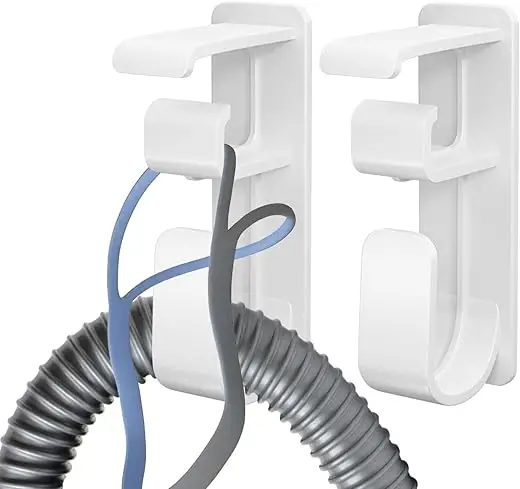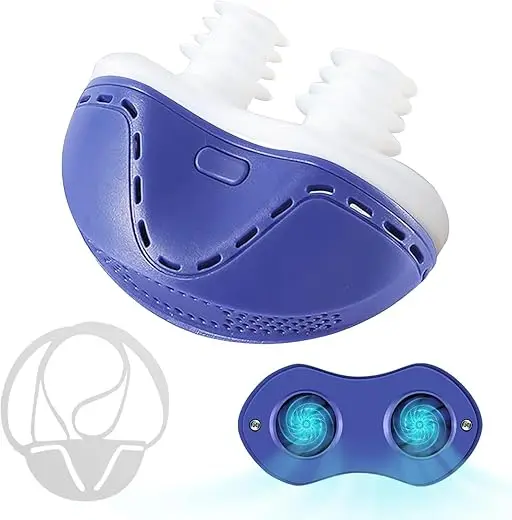Quick Facts: Sleep Apnea VA Disability Ratings
Sleep apnea is one of the most commonly claimed VA disabilities, with over 300,000 veterans receiving compensation. The VA rates sleep apnea at 0%, 30%, 50%, or 100% disability depending on severity and treatment requirements. Most veterans with sleep apnea requiring CPAP receive a 50% rating, worth $1,075.16 per month (2024 rates, veteran only).
If you served our country and now struggle with sleep apnea, you’ve earned the right to compensation and treatment. This comprehensive guide will walk you through everything you need to know about filing a successful VA claim for sleep apnea, understanding secondary connections, and maximizing your benefits.
Understanding VA Ratings for Sleep Apnea
The Four Rating Levels Explained
0% Rating (Service-Connected but Non-Compensable)
- Documented sleep apnea diagnosis
- Asymptomatic or mild symptoms
- No treatment required
- Establishes service connection for future claims
- Eligible for VA healthcare
- Can be increased if condition worsens
30% Rating
- Persistent daytime hypersomnolence
- Does not require CPAP or other breathing device
- Symptoms interfere with daily activities
- May use oral appliance or positional therapy
- Worth $524.31/month (2024, veteran only)
50% Rating (Most Common)
- Requires use of CPAP or other breathing assistance device
- This is the standard rating if CPAP prescribed
- No need to prove daily use initially
- Worth $1,075.16/month (2024, veteran only)
- Includes dependent benefits if applicable
100% Rating (Rare)
- Chronic respiratory failure with carbon dioxide retention
- Cor pulmonale (right heart failure)
- Requires tracheostomy
- Extremely severe cases only
- Worth $3,737.85/month (2024, veteran only)
- Typically involves multiple system failures
2024 VA Disability Payment Rates for Sleep Apnea
50% Rating (Most Common for CPAP Users):
- Veteran alone: $1,075.16
- With spouse: $1,179.16
- With spouse and 1 child: $1,255.16
- With spouse and 2 children: $1,331.16
- Each additional child under 18: $76.00
- Each additional child over 18 in school: $246.00
Combined Ratings Impact: Sleep apnea often combines with other disabilities. Example combinations:
- 50% sleep apnea + 30% PTSD = 65% combined (pays at 70% rate)
- 50% sleep apnea + 50% back = 75% combined (pays at 80% rate)
- Multiple ratings can reach 100% combined
Establishing Service Connection: Three Pathways
1. Direct Service Connection
Requirements:
- In-service diagnosis or symptoms
- Current diagnosis
- Medical nexus linking the two
Strong Evidence:
- Military medical records showing:
- Snoring complaints
- Daytime fatigue
- Sleep disturbances
- Weight gain in service
- Hypertension development
- Buddy statements from service members
- Performance evaluations mentioning fatigue
- Deployment records (dust, burn pits)
Common In-Service Risk Factors:
- Combat stress
- Irregular sleep schedules
- Exposure to burn pits
- Desert dust/particulates
- Military bearing (neck position)
- Weight gain during service
- Shift work/guard duty
2. Secondary Service Connection (Most Common Path)
Sleep apnea can be claimed secondary to already service-connected conditions:
PTSD/Mental Health → Sleep Apnea
- Most successful secondary claim
- 50% of PTSD veterans have sleep apnea
- Weight gain from medications
- Sleep architecture disruption
- Hypervigilance affecting sleep
Required Evidence:
- Service-connected PTSD/depression/anxiety rating
- Sleep study showing OSA
- Medical opinion linking conditions
- Medication history showing weight gain
Musculoskeletal Conditions → Sleep Apnea
- Chronic pain disrupts sleep
- Pain medications affect breathing
- Limited exercise leads to weight gain
- Cervical spine injuries affect airway
Common Secondary Connections:
- Cervical spine conditions
- Lumbar spine/back pain
- Chronic pain syndrome
- Traumatic brain injury (TBI)
- Sinusitis/rhinitis
- GERD
- Hypothyroidism
- Diabetes Type 2
- Hypertension
3. Presumptive Service Connection
Gulf War Veterans (1990-present):
- Sleep apnea as undiagnosed illness
- Southwest Asia service
- Particulate matter exposure
- No specific cause needed
Burn Pit Exposure:
- New presumptive conditions added
- Register in VA Burn Pit Registry
- Iraq, Afghanistan, other locations
- Respiratory conditions covered
Agent Orange Exposure:
- Indirect through diabetes
- Diabetes → sleep apnea
- Vietnam, Korea DMZ, Thailand
Building Your Strongest Case
Essential Medical Evidence
Sleep Study (Polysomnography):
- VA or private sleep study
- AHI (Apnea-Hypopnea Index) documented
- Type of sleep apnea identified
- Severity classification
- Treatment recommendations
Continuous Documentation:
- Primary care notes mentioning symptoms
- Specialist consultations
- CPAP compliance data
- Prescription records
- Emergency room visits
Nexus Letter Requirements: A strong nexus letter includes:
- Doctor’s credentials
- Review of medical records
- Clear opinion with rationale
- “More likely than not” language
- Connection to service or SC condition
- Current medical literature citations
Lay Evidence That Strengthens Your Claim
Personal Statement Should Include:
- When symptoms started
- How symptoms progressed
- Impact on work/daily life
- Treatment attempts
- Connection to military service
- Specific examples of impairment
Buddy Statements:
- Fellow service members confirming snoring
- Roommates describing breathing interruptions
- Family noticing post-service changes
- Employers documenting fatigue issues
- Spouses describing sleep disturbances
Work Impact Documentation:
- Performance evaluations
- Sick leave records
- Accommodation requests
- Job loss due to fatigue
- Career changes required
The Claims Process: Step-by-Step
Step 1: Gather Your Evidence
Timeline: 2-4 weeks
- Obtain service medical records
- Get current sleep study
- Collect private medical records
- Draft personal statement
- Request buddy statements
- Organize medications list
Step 2: File Your Claim
Options for Filing:
- VA.gov (fastest)
- Mail (VA Form 21-526EZ)
- In person at regional office
- With VSO assistance
Intent to File:
- Preserves earlier effective date
- Gives you 1 year to complete claim
- Can be done online, phone, or mail
- Protects retroactive benefits
Step 3: C&P Exam Preparation
What to Expect:
- Review of medical history
- Discussion of symptoms
- Impact on daily life assessment
- May not include new sleep study
- Usually 15-30 minutes
How to Prepare:
- List all symptoms
- Bring CPAP compliance report
- Document work impacts
- Be honest about severity
- Don’t minimize symptoms
- Bring spouse if possible
Key Points to Communicate:
- Frequency of symptoms
- CPAP usage requirements
- Daytime impairment
- Work limitations
- Social impacts
- Treatment history
Step 4: The Decision
Timeline:
- Average 120-150 days
- Expedited for hardship
- Check status on VA.gov
Possible Outcomes:
- Granted at claimed percentage
- Granted at lower percentage
- Deferred for more evidence
- Denied
Common Reasons for Denial and How to Overcome
Denial Reason 1: Lack of Current Diagnosis
Problem: No recent sleep study Solution:
- Get new sleep study (VA or private)
- Home sleep test acceptable
- Include in supplemental claim
Denial Reason 2: No Service Connection
Problem: Can’t link to service Solution:
- Identify secondary connections
- Get specialist nexus opinion
- Submit buddy statements
- Research unit exposures
Denial Reason 3: Insufficient Severity
Problem: Symptoms deemed mild Solution:
- Document CPAP requirement
- Show work/life impact
- Provide compliance data
- Detail daily limitations
Denial Reason 4: Pre-Existing Condition
Problem: VA claims pre-service onset Solution:
- Show aggravation in service
- Document weight gain
- Prove symptom increase
- Get medical opinion on progression
Maximizing Your Rating: Strategic Considerations
Secondary Conditions to Claim
Sleep apnea often causes secondary conditions:
Hypertension:
- 50% of OSA patients develop
- Separate 10-20% rating possible
- Requires medication evidence
Depression/Anxiety:
- Secondary to sleep apnea
- 30-70% additional rating
- Document mental health treatment
Erectile Dysfunction:
- Common with sleep apnea
- 0% rating but SMC-K ($128.62/month)
- Requires medical documentation
Migraines:
- Morning headaches qualify
- 30-50% rating possible
- Frequency documentation crucial
TDIU Consideration
Total Disability Individual Unemployability:
- Unable to work due to SC disabilities
- Don’t need 100% scheduler rating
- Sleep apnea + other conditions
- Pays at 100% rate
- Consider if can’t maintain employment
SMC Considerations
Special Monthly Compensation:
- Loss of use considerations
- Housebound status
- Aid and attendance
- Rarely applicable for sleep apnea alone
- Combined with other conditions
CPAP Compliance and Your Rating
VA Requirements
Initial Rating:
- Prescription is sufficient for 50%
- No compliance data required initially
- Rating based on medical necessity
Continuing Rating:
- Routine future exams (RFEs) possible
- May request compliance data
- Non-compliance doesn’t automatically reduce rating
- Must show medical need continues
Compliance Best Practices:
- Use CPAP minimum 4 hours nightly
- 70% of nights (21/30)
- Download reports annually
- Keep prescription current
- Document any issues
Dealing with Compliance Issues
Valid Reasons for Non-Compliance:
- Mask fit problems
- Skin irritation
- Claustrophobia
- Sinus issues
- Equipment malfunction
Protecting Your Rating:
- Document all issues
- Show attempts to comply
- Get medical support
- Try alternative masks
- Request equipment adjustments
Appeals Process: Fighting Denials
Your Appeal Options
1. Higher-Level Review (HLR):
- Same evidence reviewed by senior rater
- No new evidence allowed
- 125-day average decision
- Good for clear errors
2. Supplemental Claim:
- Submit new and relevant evidence
- Most common choice
- Preserves effective date if filed within 1 year
- 125-day average
3. Board Appeal:
- Direct review (no hearing): 1-2 years
- Video hearing: 2-3 years
- In-person hearing: 3-4 years
- Judge reviews case
When to Get Help
Consider VSO Assistance:
- Free representation
- Know the system
- Access to records
- Help with forms
Consider Attorney:
- Complex cases
- Multiple denials
- TDIU claims
- Federal court appeals
Tips from Successful Veterans
Do’s
✓ Keep every medical record ✓ Be consistent in descriptions ✓ Get buddy statements early ✓ Document everything ✓ Use VA healthcare when possible ✓ Be honest about symptoms ✓ File intent to file immediately ✓ Join veteran support groups ✓ Track CPAP usage
Don’ts
✗ Minimize your symptoms ✗ Miss C&P exams ✗ Exaggerate conditions ✗ Give up after denial ✗ Ignore deadlines ✗ Go alone to exams ✗ Forget secondary conditions ✗ Skip treatment
Resources and Support
VA Resources
- VA.gov/disability
- 1-800-827-1000
- Local VA medical centers
- Vet Centers
- VA work-study program
Veteran Service Organizations
- DAV (Disabled American Veterans)
- VFW (Veterans of Foreign Wars)
- American Legion
- AMVETS
- Vietnam Veterans of America
Online Communities
- VA Claims Insider
- Reddit r/VeteransBenefits
- Hadit.com
- Veterans.community
- Facebook groups
Medical Resources
- VA sleep clinics
- Community care referrals
- Telehealth options
- CPAP supply sources
- Private sleep specialists
Sample Statements for Your Claim
Personal Statement Example Opening:
“During my service in [branch] from [dates], I was exposed to [specific conditions]. I first noticed symptoms of sleep apnea including [specific symptoms] in approximately [date]. These symptoms have progressively worsened and now require CPAP therapy for treatment…”
Buddy Statement Example:
“I served with [veteran’s name] in [unit] from [dates]. During deployment, I shared quarters with [him/her] and witnessed loud snoring, gasping for air during sleep, and extreme daytime fatigue that affected [his/her] duty performance…”
Spousal Statement Example:
“I have been married to [veteran] for [years]. I witness [him/her] stop breathing multiple times nightly, requiring me to wake [him/her]. This occurs [frequency]. [He/She] requires CPAP therapy and experiences severe daytime fatigue affecting…”
Conclusion: Your Service Earned These Benefits
Sleep apnea doesn’t discriminate, and neither should the VA disability system. Whether your sleep apnea developed during service, was aggravated by military duties, or resulted from other service-connected conditions, you’ve earned the right to compensation and treatment.
The path to VA disability benefits for sleep apnea can seem daunting, but thousands of veterans successfully navigate it each year. With proper documentation, persistence, and the right approach, you can secure the benefits you deserve.
Remember:
- Sleep apnea requiring CPAP typically rates at 50%
- Secondary connections are often the easiest path
- Documentation is everything
- Don’t give up after initial denial
- Help is available from VSOs
- Your service has value – claim what you’ve earned
Your military service came with sacrifices that affect you today. The VA disability system exists to compensate you for those ongoing impacts. Don’t let pride, frustration, or confusion prevent you from claiming benefits for your sleep apnea. You’ve earned them.
This guide provides general information about VA disability claims for sleep apnea. For personalized assistance with your claim, contact a Veterans Service Organization or accredited representative.



